Louise Bloch
Evaluating Compliance with Visualization Guidelines in Diagrams for Scientific Publications Using Large Vision Language Models
Jun 24, 2025Abstract:Diagrams are widely used to visualize data in publications. The research field of data visualization deals with defining principles and guidelines for the creation and use of these diagrams, which are often not known or adhered to by researchers, leading to misinformation caused by providing inaccurate or incomplete information. In this work, large Vision Language Models (VLMs) are used to analyze diagrams in order to identify potential problems in regards to selected data visualization principles and guidelines. To determine the suitability of VLMs for these tasks, five open source VLMs and five prompting strategies are compared using a set of questions derived from selected data visualization guidelines. The results show that the employed VLMs work well to accurately analyze diagram types (F1-score 82.49 %), 3D effects (F1-score 98.55 %), axes labels (F1-score 76.74 %), lines (RMSE 1.16), colors (RMSE 1.60) and legends (F1-score 96.64 %, RMSE 0.70), while they cannot reliably provide feedback about the image quality (F1-score 0.74 %) and tick marks/labels (F1-score 46.13 %). Among the employed VLMs, Qwen2.5VL performs best, and the summarizing prompting strategy performs best for most of the experimental questions. It is shown that VLMs can be used to automatically identify a number of potential issues in diagrams, such as missing axes labels, missing legends, and unnecessary 3D effects. The approach laid out in this work can be extended for further aspects of data visualization.
ROCOv2: Radiology Objects in COntext Version 2, an Updated Multimodal Image Dataset
May 16, 2024Abstract:Automated medical image analysis systems often require large amounts of training data with high quality labels, which are difficult and time consuming to generate. This paper introduces Radiology Object in COntext version 2 (ROCOv2), a multimodal dataset consisting of radiological images and associated medical concepts and captions extracted from the PMC Open Access subset. It is an updated version of the ROCO dataset published in 2018, and adds 35,705 new images added to PMC since 2018. It further provides manually curated concepts for imaging modalities with additional anatomical and directional concepts for X-rays. The dataset consists of 79,789 images and has been used, with minor modifications, in the concept detection and caption prediction tasks of ImageCLEFmedical Caption 2023. The dataset is suitable for training image annotation models based on image-caption pairs, or for multi-label image classification using Unified Medical Language System (UMLS) concepts provided with each image. In addition, it can serve for pre-training of medical domain models, and evaluation of deep learning models for multi-task learning.
PreprintResolver: Improving Citation Quality by Resolving Published Versions of ArXiv Preprints using Literature Databases
Sep 04, 2023Abstract:The growing impact of preprint servers enables the rapid sharing of time-sensitive research. Likewise, it is becoming increasingly difficult to distinguish high-quality, peer-reviewed research from preprints. Although preprints are often later published in peer-reviewed journals, this information is often missing from preprint servers. To overcome this problem, the PreprintResolver was developed, which uses four literature databases (DBLP, SemanticScholar, OpenAlex, and CrossRef / CrossCite) to identify preprint-publication pairs for the arXiv preprint server. The target audience focuses on, but is not limited to inexperienced researchers and students, especially from the field of computer science. The tool is based on a fuzzy matching of author surnames, titles, and DOIs. Experiments were performed on a sample of 1,000 arXiv-preprints from the research field of computer science and without any publication information. With 77.94 %, computer science is highly affected by missing publication information in arXiv. The results show that the PreprintResolver was able to resolve 603 out of 1,000 (60.3 %) arXiv-preprints from the research field of computer science and without any publication information. All four literature databases contributed to the final result. In a manual validation, a random sample of 100 resolved preprints was checked. For all preprints, at least one result is plausible. For nine preprints, more than one result was identified, three of which are partially invalid. In conclusion the PreprintResolver is suitable for individual, manually reviewed requests, but less suitable for bulk requests. The PreprintResolver tool (https://preprintresolver.eu, Available from 2023-08-01) and source code (https://gitlab.com/ippolis_wp3/preprint-resolver, Accessed: 2023-07-19) is available online.
Why is the winner the best?
Mar 30, 2023



Abstract:International benchmarking competitions have become fundamental for the comparative performance assessment of image analysis methods. However, little attention has been given to investigating what can be learnt from these competitions. Do they really generate scientific progress? What are common and successful participation strategies? What makes a solution superior to a competing method? To address this gap in the literature, we performed a multi-center study with all 80 competitions that were conducted in the scope of IEEE ISBI 2021 and MICCAI 2021. Statistical analyses performed based on comprehensive descriptions of the submitted algorithms linked to their rank as well as the underlying participation strategies revealed common characteristics of winning solutions. These typically include the use of multi-task learning (63%) and/or multi-stage pipelines (61%), and a focus on augmentation (100%), image preprocessing (97%), data curation (79%), and postprocessing (66%). The "typical" lead of a winning team is a computer scientist with a doctoral degree, five years of experience in biomedical image analysis, and four years of experience in deep learning. Two core general development strategies stood out for highly-ranked teams: the reflection of the metrics in the method design and the focus on analyzing and handling failure cases. According to the organizers, 43% of the winning algorithms exceeded the state of the art but only 11% completely solved the respective domain problem. The insights of our study could help researchers (1) improve algorithm development strategies when approaching new problems, and (2) focus on open research questions revealed by this work.
Biomedical image analysis competitions: The state of current participation practice
Dec 16, 2022Abstract:The number of international benchmarking competitions is steadily increasing in various fields of machine learning (ML) research and practice. So far, however, little is known about the common practice as well as bottlenecks faced by the community in tackling the research questions posed. To shed light on the status quo of algorithm development in the specific field of biomedical imaging analysis, we designed an international survey that was issued to all participants of challenges conducted in conjunction with the IEEE ISBI 2021 and MICCAI 2021 conferences (80 competitions in total). The survey covered participants' expertise and working environments, their chosen strategies, as well as algorithm characteristics. A median of 72% challenge participants took part in the survey. According to our results, knowledge exchange was the primary incentive (70%) for participation, while the reception of prize money played only a minor role (16%). While a median of 80 working hours was spent on method development, a large portion of participants stated that they did not have enough time for method development (32%). 25% perceived the infrastructure to be a bottleneck. Overall, 94% of all solutions were deep learning-based. Of these, 84% were based on standard architectures. 43% of the respondents reported that the data samples (e.g., images) were too large to be processed at once. This was most commonly addressed by patch-based training (69%), downsampling (37%), and solving 3D analysis tasks as a series of 2D tasks. K-fold cross-validation on the training set was performed by only 37% of the participants and only 50% of the participants performed ensembling based on multiple identical models (61%) or heterogeneous models (39%). 48% of the respondents applied postprocessing steps.
Machine Learning Workflow to Explain Black-box Models for Early Alzheimer's Disease Classification Evaluated for Multiple Datasets
May 12, 2022
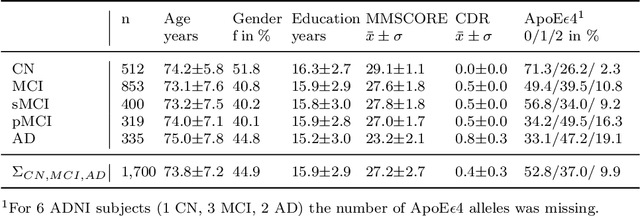
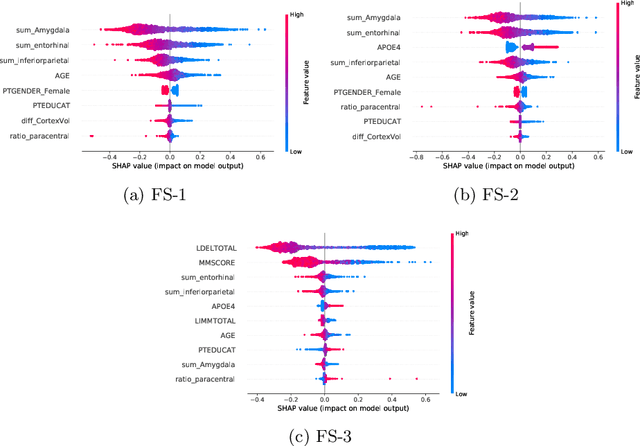
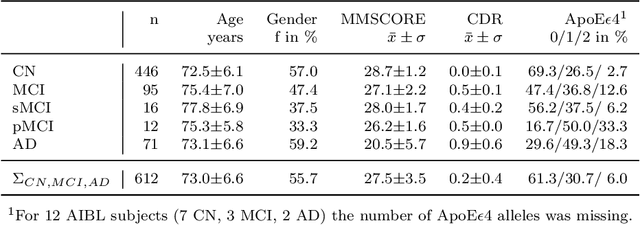
Abstract:Purpose: Hard-to-interpret Black-box Machine Learning (ML) were often used for early Alzheimer's Disease (AD) detection. Methods: To interpret eXtreme Gradient Boosting (XGBoost), Random Forest (RF), and Support Vector Machine (SVM) black-box models a workflow based on Shapley values was developed. All models were trained on the Alzheimer's Disease Neuroimaging Initiative (ADNI) dataset and evaluated for an independent ADNI test set, as well as the external Australian Imaging and Lifestyle flagship study of Ageing (AIBL), and Open Access Series of Imaging Studies (OASIS) datasets. Shapley values were compared to intuitively interpretable Decision Trees (DTs), and Logistic Regression (LR), as well as natural and permutation feature importances. To avoid the reduction of the explanation validity caused by correlated features, forward selection and aspect consolidation were implemented. Results: Some black-box models outperformed DTs and LR. The forward-selected features correspond to brain areas previously associated with AD. Shapley values identified biologically plausible associations with moderate to strong correlations with feature importances. The most important RF features to predict AD conversion were the volume of the amygdalae, and a cognitive test score. Good cognitive test performances and large brain volumes decreased the AD risk. The models trained using cognitive test scores significantly outperformed brain volumetric models ($p<0.05$). Cognitive Normal (CN) vs. AD models were successfully transferred to external datasets. Conclusion: In comparison to previous work, improved performances for ADNI and AIBL were achieved for CN vs. Mild Cognitive Impairment (MCI) classification using brain volumes. The Shapley values and the feature importances showed moderate to strong correlations.
Boosting EfficientNets Ensemble Performance via Pseudo-Labels and Synthetic Images by pix2pixHD for Infection and Ischaemia Classification in Diabetic Foot Ulcers
Nov 30, 2021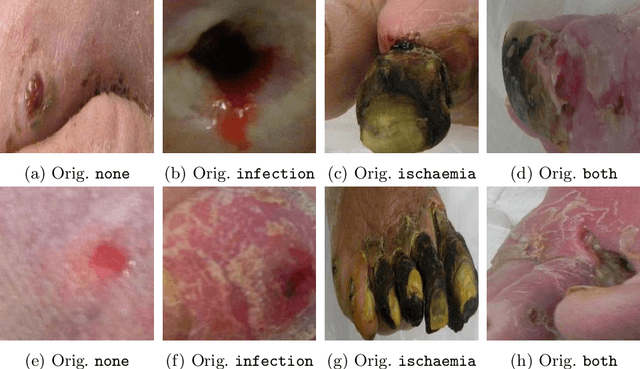
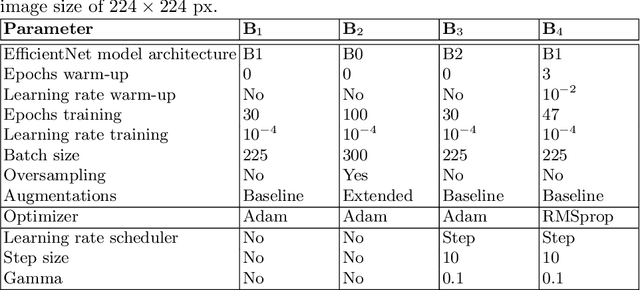


Abstract:Diabetic foot ulcers are a common manifestation of lesions on the diabetic foot, a syndrome acquired as a long-term complication of diabetes mellitus. Accompanying neuropathy and vascular damage promote acquisition of pressure injuries and tissue death due to ischaemia. Affected areas are prone to infections, hindering the healing progress. The research at hand investigates an approach on classification of infection and ischaemia, conducted as part of the Diabetic Foot Ulcer Challenge (DFUC) 2021. Different models of the EfficientNet family are utilized in ensembles. An extension strategy for the training data is applied, involving pseudo-labeling for unlabeled images, and extensive generation of synthetic images via pix2pixHD to cope with severe class imbalances. The resulting extended training dataset features $8.68$ times the size of the baseline and shows a real to synthetic image ratio of $1:3$. Performances of models and ensembles trained on the baseline and extended training dataset are compared. Synthetic images featured a broad qualitative variety. Results show that models trained on the extended training dataset as well as their ensemble benefit from the large extension. F1-Scores for rare classes receive outstanding boosts, while those for common classes are either not harmed or boosted moderately. A critical discussion concretizes benefits and identifies limitations, suggesting improvements. The work concludes that classification performance of individual models as well as that of ensembles can be boosted utilizing synthetic images. Especially performance for rare classes benefits notably.
 Add to Chrome
Add to Chrome Add to Firefox
Add to Firefox Add to Edge
Add to Edge